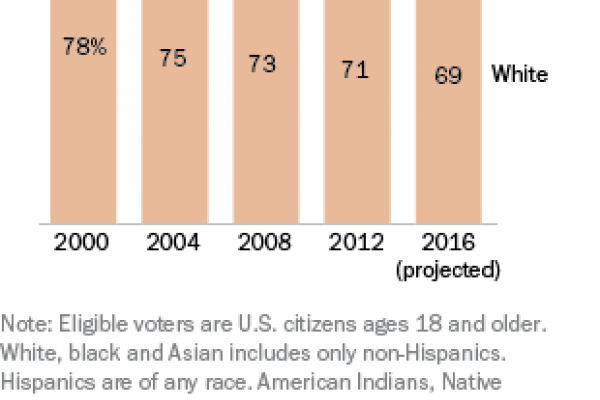Feb 4, 2016
The good, the bad, and the ugly of this campaign season has exposed the depth of some of the United States’ racial and ethnic fault lines. But the fault lines themselves are moving. The 2016 electorate will be the most racially and ethnically diverse ever, due largely to U.S.-born Hispanic youth and naturalizations of Asian immigrants.
Read the Full Article

Already a subscriber? Login
